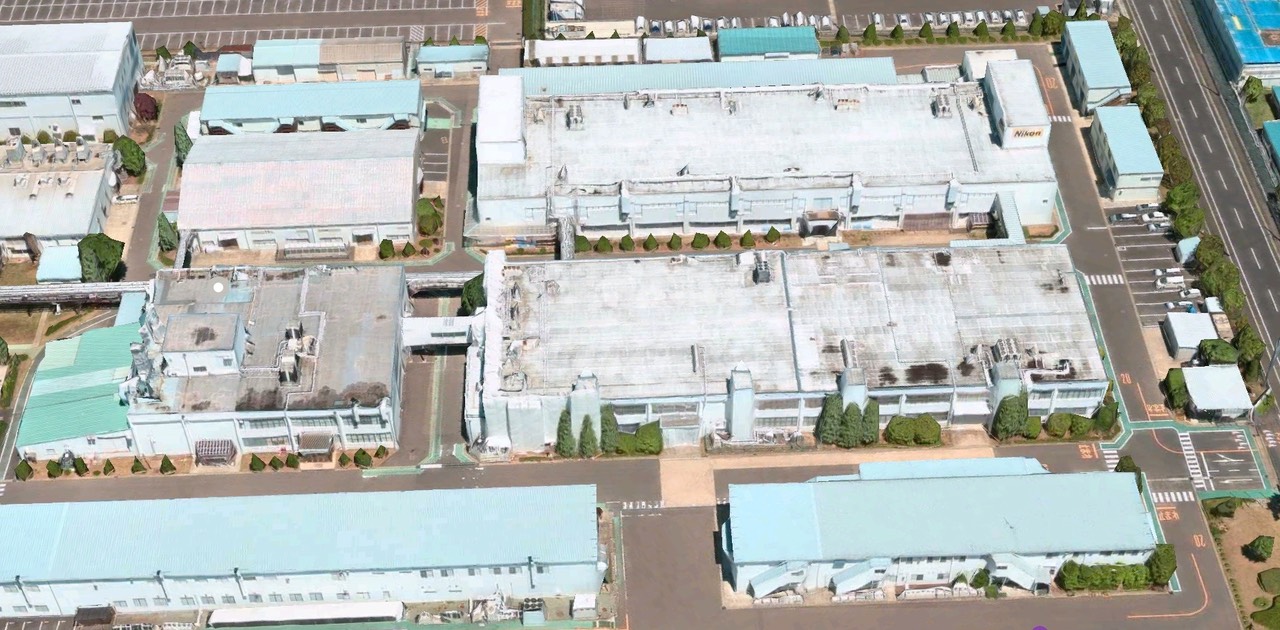
In mid-December Nikon revealed to the Japanese business press that it was planning to move all domestic camera production to its Thailand plant by the end of 2021. That effectively means that the long-serving manufacturing facility in Sendai Japan (Apple Maps photo, above) will no longer make cameras. Indeed, it already appears that the only current camera still being actively made in Sendai at the moment is the D6, and that will transfer to Thailand before the end of 2021. Note that the Sendai plant is not closing. It apparently will continue to produce parts and process for camera manufacturing, it simply won't be assembling cameras any more. That space will be given to other portions of Nikon that can utilize the space more effectively.
Nikon has long made most of their interchangeable lens cameras in Thailand. The Ayuthaya plant north of Bangkok, Thailand was designed for Nikon's mass production, and produced millions of cameras a year at the height of the digital era. The Sendai plant north of Tokyo on the other hand was a low volume plant that has mostly produced high end cameras (most recently, the Z6, Z7, and D6). I don't know that the Sendai plant ever produced more than about 200k units in a year; part of the long backorder status of the D800 model in 2012 was the fact that Sendai couldn't make enough to meet demand.
The first camera made in Sendai was the EM (1979), but the plant eventually became the place where top-end cameras were made, at least during their initial runs. For example, the D800 and D800E started out as Sendai assembly, but the whole D8xx line eventually transferred to Thailand. More recently, the Z6 and Z7 were made at Sendai, but the Z6 II and Z7 II are produced in Thailand. Thus, Sendai never really was the long-term producer of any given model, but more accurately could have been called the test bed for initial assembly of completely new products.
Nikon presented the concentration of manufacturing to Thailand as a cost reduction move.
While such a move was probably inevitable, one has to wonder about Nikon's vulnerability again. For those with short memories, the 2011 earthquake and tsunami that shut down the Sendai plant for months was followed by flooding in Thailand, that drowned the first floor and shut down the Ayuthaya plant for months. Nikon actually survived this double catastrophe because they were at the time building Coolpix and Nikon 1 cameras in China, so they just moved most of their promotion and sales efforts to those products. If not for that, there would have been no new Nikon cameras for some time during that period.
Those dual shutdowns in 2011 sent Nikon management deep into disaster planning, and what followed was more distribution of manufacturing effort, particularly of suppliers. Here we have Nikon once again reverting to centralized production, which will leave them vulnerable to any problems in Thailand in the future. This tells me that Nikon didn't have any choice in the consolidation: they need to reduce size and costs in order to return to profitability, and they can't do that with manufacturing spread all over Asia.
Short term, this likely means another big write-down of assets for the company, which means the negative numbers aren't done in the financials. I wouldn't worry about write-offs, I'd only worry whether the on-going sales have returned to profitability and retain positive cash flow. At the moment, that looks like the way things are going: return to profitability, but on smaller volume.
That said, if I were one of those financial rating companies, I'd be downgrading Nikon's rating at the moment. You know, from something like A to BBB (using Standard & Poor's rating board). (Nikon publishes their Japan Credit Rating Agency value, which is currently A+/Negative for long-term debt. That would be the third highest rating, or "a high level of certainty to honor the financial obligations," though the outlook [Negative] is that the rating might be lowered.)
However, in my opinion nothing's really changed other than a higher vulnerability to external disruption (e.g. flood). Nikon isn't in financial trouble, management seems to have a plan for how the downsizing works, and I haven't heard a thing about anything changing in Nikon's R&D cycles. In other words, there's not really anything new to worry about, if that's what you got out of this news.
